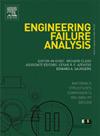Simulation-derived semantic features enabling zero-shot domain adaptation for rail fastener failure detection in unseen scenarios
IF 5.7
2区 工程技术
Q1 ENGINEERING, MECHANICAL
引用次数: 0
Abstract
Rail fasteners are crucial components in maintaining the structural integrity of railway infrastructure, and timely identification of fastener failures is essential for ensuring operational safety. Conventional deep learning methods for structural health monitoring rely heavily on extensive labelled failure data for effective model training. This becomes particularly challenging when dealing with early-stage failures (e.g., fastener loosening), where such labelled data may be scarce or unavailable. To address this issue, we propose a simulation-derived semantic features enabling zero-shot domain adaptation (SSFZSDA) method, designed to enhance the generalization capabilities by transferring learned semantic features from simulated datasets to unlabelled real-world datasets. Specifically, semantic features that implicitly represent various structural health conditions are extracted from the simulation dataset using vehicle-track coupled dynamics. By integrating these semantic features with real-world healthy data through domain adaptation and contrastive learning techniques, the proposed method is capable of effectively detecting failures in previously unseen practical scenarios. The results demonstrate that SSFZSDA achieves 99.7% accuracy in detecting three distinct levels of fastener loosening based on track acceleration data, while also demonstrating excellent performance based on vehicle-mounted acceleration data, achieving 92% identification accuracy. The proposed method’s effectiveness and generalization are validated through comparative analysis, outperforming other state-of-the-art zero-shot domain adaptation methods.
仿真衍生的语义特征,使零射击域适应轨道紧固件故障检测在未知的场景
铁路扣件是维护铁路基础设施结构完整性的关键部件,及时识别扣件故障对确保运行安全至关重要。用于结构健康监测的传统深度学习方法严重依赖于大量标记故障数据来进行有效的模型训练。在处理早期故障(例如,紧固件松动)时,这变得特别具有挑战性,因为这些标记数据可能很少或不可用。为了解决这个问题,我们提出了一种模拟衍生的语义特征支持零射击域自适应(SSFZSDA)方法,旨在通过将学习到的语义特征从模拟数据集转移到未标记的真实数据集来增强泛化能力。具体而言,利用车辆-轨道耦合动力学从仿真数据集中提取隐含表示各种结构健康状况的语义特征。通过领域自适应和对比学习技术将这些语义特征与现实世界的健康数据相结合,该方法能够有效地检测以前未见过的实际场景中的故障。结果表明,基于轨道加速度数据的SSFZSDA在检测三种不同程度的紧固件松动时准确率达到99.7%,而基于车载加速度数据的SSFZSDA也表现出优异的性能,识别准确率达到92%。通过对比分析,验证了该方法的有效性和泛化性,优于其他先进的零弹域自适应方法。
本文章由计算机程序翻译,如有差异,请以英文原文为准。
求助全文
约1分钟内获得全文
求助全文
来源期刊

Engineering Failure Analysis
工程技术-材料科学:表征与测试
CiteScore
7.70
自引率
20.00%
发文量
956
审稿时长
47 days
期刊介绍:
Engineering Failure Analysis publishes research papers describing the analysis of engineering failures and related studies.
Papers relating to the structure, properties and behaviour of engineering materials are encouraged, particularly those which also involve the detailed application of materials parameters to problems in engineering structures, components and design. In addition to the area of materials engineering, the interacting fields of mechanical, manufacturing, aeronautical, civil, chemical, corrosion and design engineering are considered relevant. Activity should be directed at analysing engineering failures and carrying out research to help reduce the incidences of failures and to extend the operating horizons of engineering materials.
Emphasis is placed on the mechanical properties of materials and their behaviour when influenced by structure, process and environment. Metallic, polymeric, ceramic and natural materials are all included and the application of these materials to real engineering situations should be emphasised. The use of a case-study based approach is also encouraged.
Engineering Failure Analysis provides essential reference material and critical feedback into the design process thereby contributing to the prevention of engineering failures in the future. All submissions will be subject to peer review from leading experts in the field.
 求助内容:
求助内容: 应助结果提醒方式:
应助结果提醒方式:


